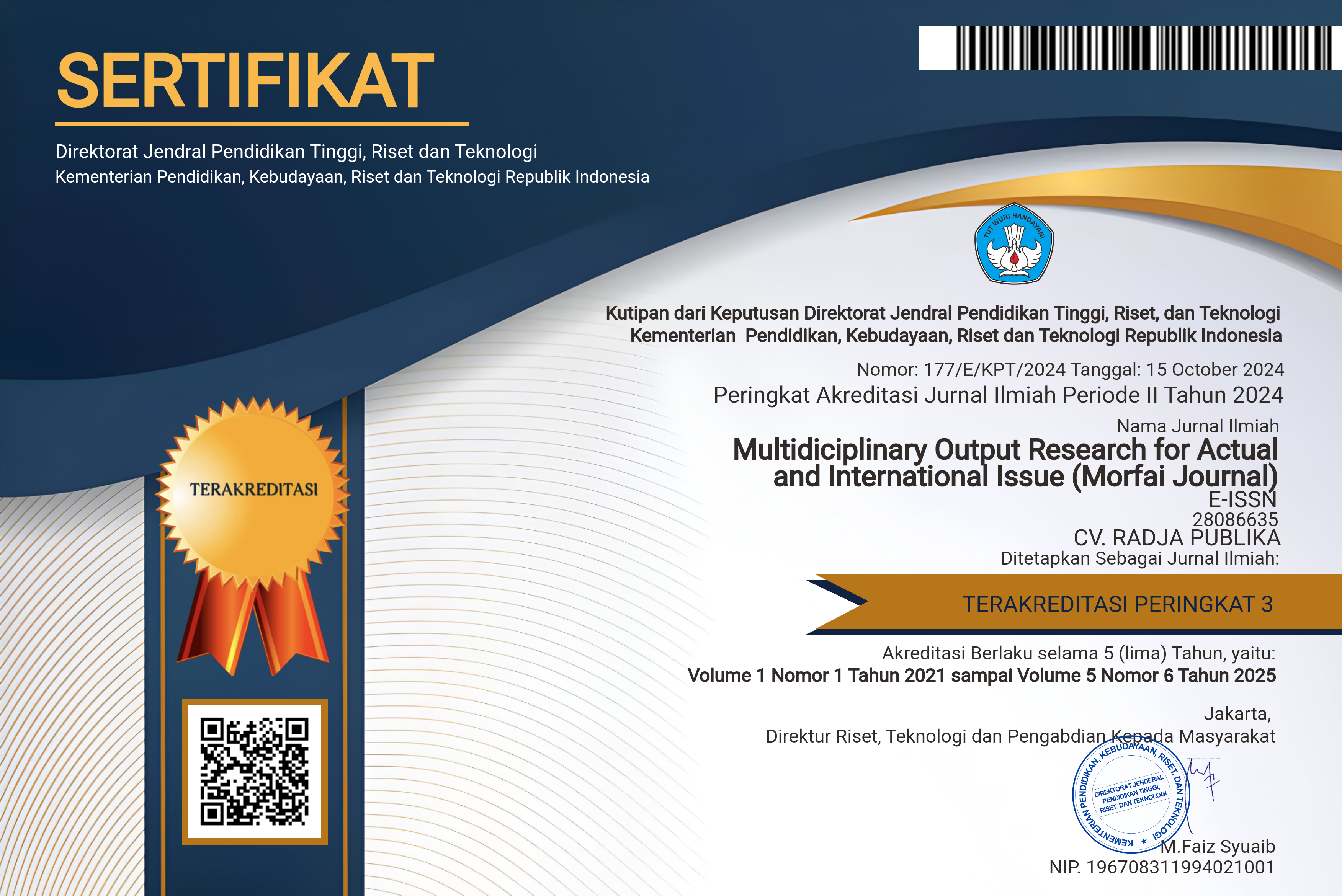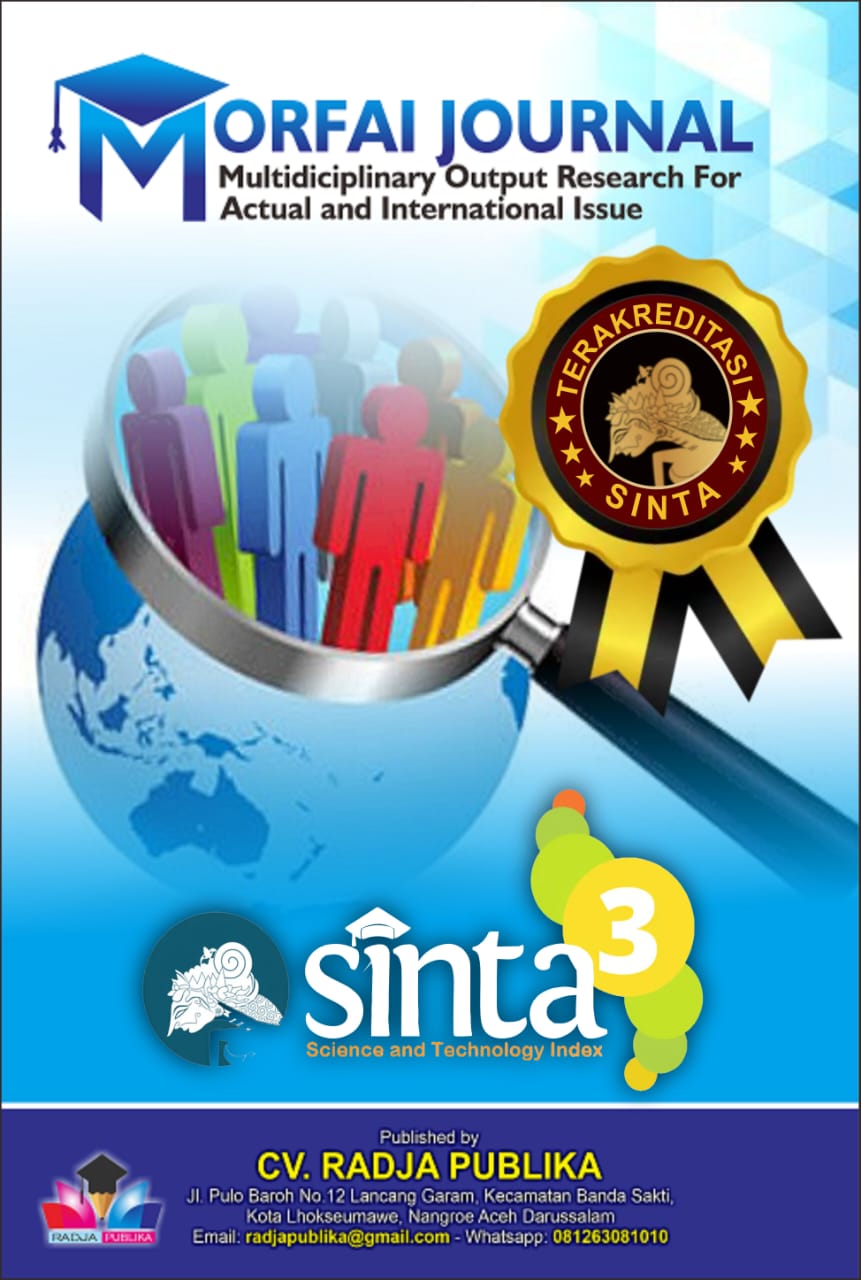IMPLEMENTATION OF THE RESTITUTION TRIANGLE METHOD IN REDUCING CHILD DELINQUENCY AT SDN 4 WONOSARI MUSI RAWAS SOUTH SUMATERA
Main Article Content
Rozikin
Lud Waluyo
Iis Siti Aisyah
This study aims to implement the Restitution Triangle method as an effective strategy in reducing juvenile delinquency in the school environment, especially at SDN 4 Wonosari, Musi Rawas, South Sumatra. The Restitution Triangle method is a restorative approach that involves collaboration between the school, parents, and children as the main actors in the process of recovery and prevention of delinquency. This study uses a descriptive quantitative approach with data collection techniques through observation, interviews, and questionnaires to students, teachers, and parents during the study period. In its application, this method focuses on open dialogue, moral responsibility, and a recovery process that involves all related parties to build children's awareness of the impact of their actions and repair damaged social relationships. The results of the study indicate that the implementation of the Restitution Triangle Method is significantly able to reduce the level of student delinquency, improve communication between schools and parents, and form more positive and responsible behavior among children. This implementation also shows an increase in students' moral awareness and empathy towards their families and the surrounding community. Based on these findings, it is suggested that this method can be routinely integrated into character education programs and child behavior management in elementary schools to create a healthy, safe, and understanding learning environment. This study contributes to the development of discipline strategies based on a restorative approach and is able to reduce child delinquency effectively.
Adlan Surya Saputra. (2023). Cultivating Self-Discipline Through Positive Discipline of Restitution. Didactics: Scientific Journal of PGSD STKIP Subang, 9(2), 5666–5682. https://doi.org/10.36989/didactics.v9i2.1367
Agusta, HTGP (2022). Building Student Character Through Positive Discipline. Proceedings of the International Conference on Technology, Education, and Science, 4(1), 8–13.
Akmal Latief, S., & Zulherawan, M. (2020). THEORETICAL EFFORTS TO OVERCOME JUVENILE DELIQUENCY. THE OTHER SIDE OF REALITY, 5(01). https://doi.org/10.25299/sisilainrealita.2020.vol5(01).6383
Amelia, F., Bakar, A., & Zuliani, H. (2017). Strategy for Preventing Violence Against Children in Banda Aceh Public Elementary Schools. Scientific Journal of Guidance and Counseling Students, 2(1), 1–11. http://www.jim.unsyiah.ac.id/pbk/article/view/2053
Asmalia, A., Chairunnisa, C., Ramadhan, MN, Danil, MA, & Arlina, A. (2024). The Role of Teachers in Handling Student Delinquency at Nurul Ittihadiyah Lubuk Pakam Middle School. INNOVATIVE: Journal Of Social Science Research, 4(4), 13818–13827.
Bastian, Winard, I., Djatu, R., Fatmawati, & Dewi. (2018). Interview Method. Data Collection Method and Analysis Technique, October.
Berampu, L., Lumbanraja, S., & Asriwati, A. (2022). Data Presentation. MIRACLE Journal, 2(1).
Damang, MY, Patandean, AJ, & Bahri, S. (2024). Implementation of the Restitution Triangle in Improving Student Discipline in Central Mamuju Regency. Bosowa Journal of Education, 5(1), 170–176.
Febriandari, EI (2017). Implementation of Positive Discipline Method as a Form of Character Education Development for Elementary School Children. Lecturer's Scientific Work, 1(1).
Fullan, M. (2007). Leading in a culture of change. John Wiley & Sons.
Gossen, D. C. (1996). Restitution: Restructuring School Discipline - Facilitator's Guide. New View Publications.
Gularso, D., & Indrianawati, M. (2022). STUDENT DELINQUENCY IN ELEMENTARY SCHOOLS. Taman Cendekia: Journal of Elementary School Education, 6(1), 54–63. https://doi.org/10.30738/tc.v6i1.12205
Harefa, A., & Ndruru, A. (2022). Criminal Psychology Perspective on the Causes of Juvenile Delinquency Reviewed from a Criminological Aspect. Jurnal Panah Keadilan, 1(1), 55–69.
Hastuti, RM (2022). The Restitution Triangle Offers a Solution to Grow Self-Discipline. PRIMARY, 1(6), 370–376.
Hofifah, H. (2023). Implementation of the Restitution Triangle in Forming the Morals of Students. Ambarsa: Journal of Islamic Education, 3(2), 110–123. https://doi.org/10.59106/abs.v3i2.146
Joyce, B. R., & Showers, B. (2002). Student achievement through staff development (Vol. 3). Association for Supervision and Curriculum Development Alexandria, VA.
Kartono, K. (1988). Pathology II: juvenile delinquency. Rajawali.
Kartono, K. (1992). Social Pathology 2: Criminal Juvenile Delinquency. Rajawali Press, Jakarta.
Marisa, S. (2024). APPLICATION OF THE RESTITUTION TRIANGLE IN FORMING STUDENTS' DISCIPLINE CHARACTERS AT STATE ELEMENTARY SCHOOL 79, BENGKULU CITY. UIN Fatmawati Sukarno Bengkulu.
Maulani, S. (2018). Antisocial Behavior in Elementary School Children and Efforts to Solve It. Madrosatuna: Journal of Elementary School Teacher Education, 1(2), 24–39.
Mitha Nafisatur. (2024). Research Data Collection Methods. RESEARCH DATA COLLECTION METHODS, 1(1).
Moleong. (2005). Primary data. In Qualitative Research Methods.
Morrish, R. G. (2000). With all due respect: Keys for building effective school discipline. Author's Choice Publishing.
Mukarromah, L., & Wulandari, A. (2025). Implementation of the Restitution Triangle on the Formation of Positive Discipline and Emotional Intelligence. JIIP-Scientific Journal of Educational Sciences, 8(2), 2232–2235.
Mulatsih, H., & Negeri, S. (2022). December 2022 77 Research Articles Improving Student Discipline Through the Application of the Restitution Triangle in Class VII.1 of SMP Negeri 51 Batam in the Academic Year. Biodidak, 2(2), 77–86.
Naili, R., Erna, Z., & Syailin, A. (2023). The Urgency of Implementing Guidance and Counseling Services in Elementary Schools. Nahdatul Ulama University of Jepara, 5(1).
Narvaez, D. (2006). Integrative ethical education. In Handbook of moral development (pp. 721–750). Psychology Press.
Ningsih, IF (2024). The Role of Positive Discipline of Restitution Triangle in Strengthening Self-Discipline Character in Elementary Schools. Proceedings of the National Seminar on Elementary Education ISSN: XXXX-XXXX, 2, 112–121.
Nugroho, MT (2022). Teacher strategy in implementing moral education to build discipline attitudes of elementary school students. Journal of Elementary Educational …, 2(1), 13–21. https://ejournal.iain-manado.ac.id/index.php/jeer/article/view/169
Oktaviana, E. (nd). Implementation of the Restitution Triangle in Forming Positive Discipline of Students in Islamic Religious Education Subjects at SD Negeri Sawangan 07. Jakarta: FITK UIN Syarif Hidayatullah Jakarta.
Oliver, J. (2019). Data Reduction. Hilos Tensados, 1.
Pratiwi, NQE, & Kurniawan, AR (2018). Identification of Student Delinquency in Elementary Schools. Scientific Article: Learning and Teaching Course, 9.
Raihana, SH (2016). Juvenile delinquency and efforts to overcome it. The Other Side of Reality, 1(1), 72–83.
Sarwirini, S. (2011). Juvenile Delinquency: Causality and Efforts to Overcome It. Perspective, 16(4), 244. https://doi.org/10.30742/perspektif.v16i4.87
Sejati, S. (2023). THE ROLE OF GUIDANCE AND COUNSELING TEACHERS IN OVERCOMING JUVENILE DELINQUENCY IN SCHOOLS. JPI: Jurnal Pustaka Indonesia, 3(3). https://doi.org/10.62159/jpi.v3i3.975
SH.,MA, R. (2016). Juvenile Delinquency and Its Prevention Efforts. Sisi Lain Realita, 1(1), 72. https://doi.org/10.25299/sisilainrealita.2016.vol1(1).1400
Sugiono. (2018). Educational Research Methods Quantitative, Qualitative, and R&D Approaches. In ALFABET, cv.
Sugiyono. (2016). Secondary Data – Raharja University. In Raharja.ac.id.
Sulisrudatin, N. (2018). Bullying cases among students (a criminology review). Scientific Journal of Aerospace Law, 5(2).









